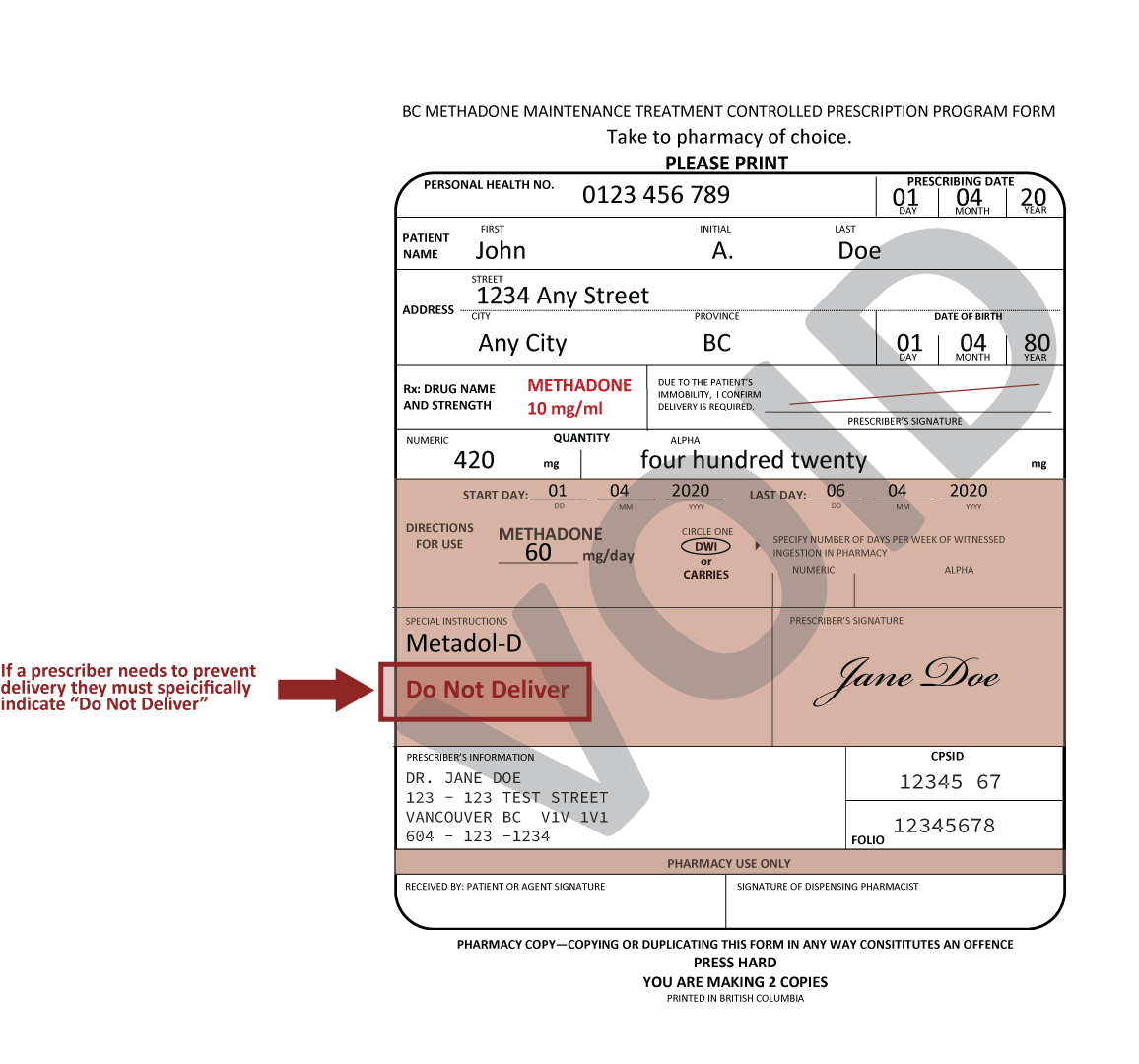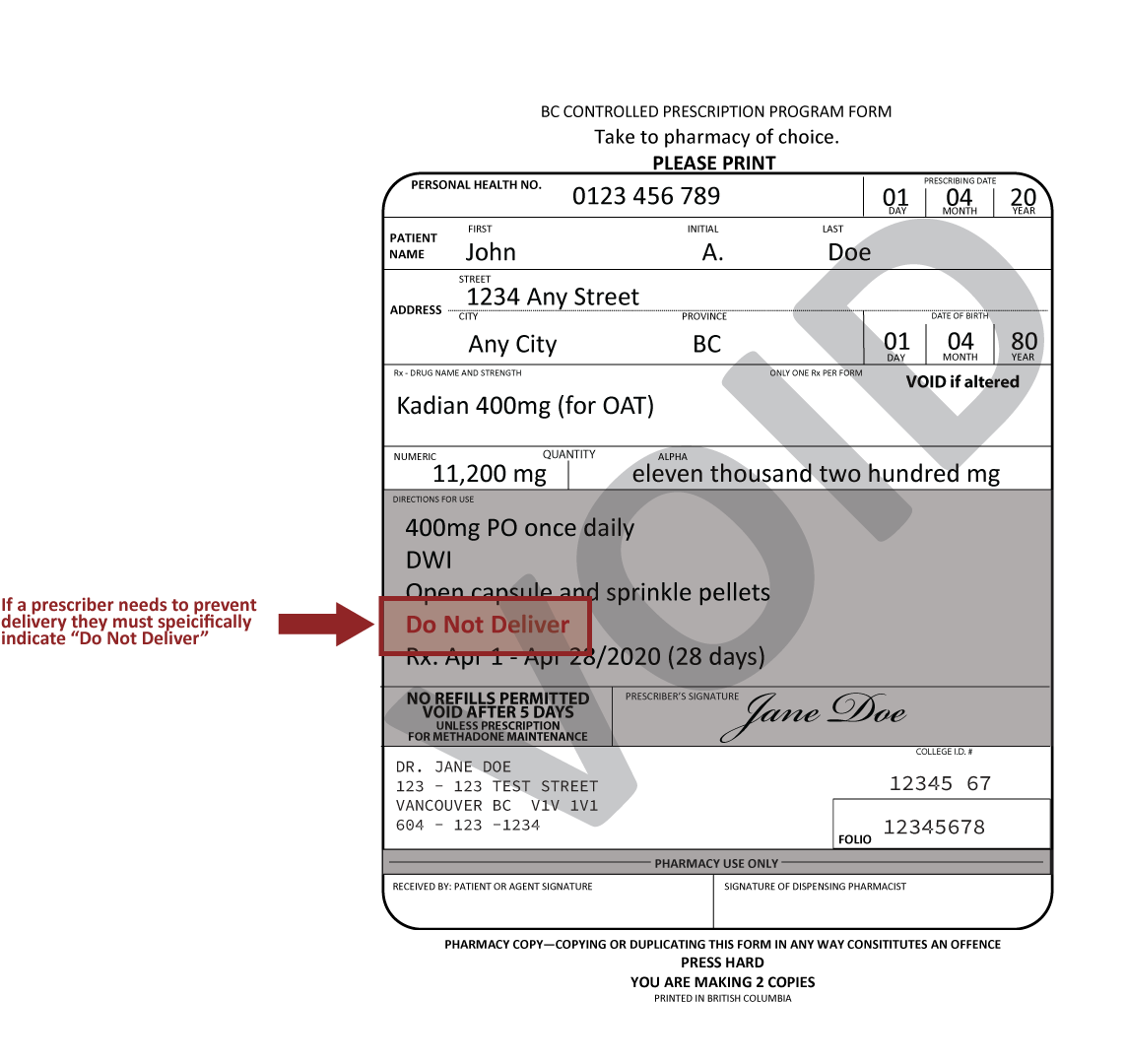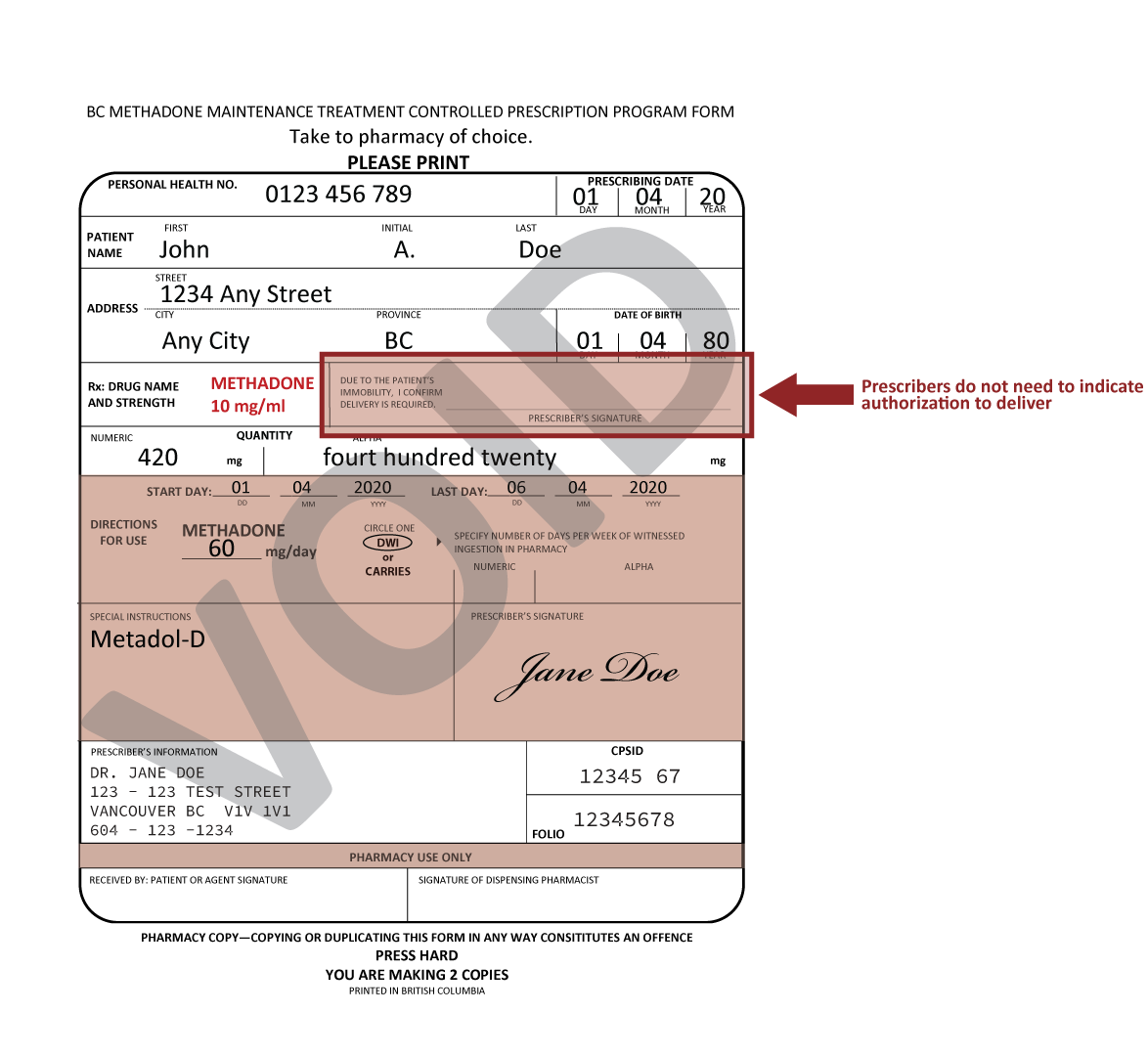Changes to the Delivery Requirements for OAT Now In Effect
|
[Update - April 7, 2020] Additional temporary amendments to Professional Practice Policy-71: Delivery of Opioid Agonist Treatment (PPP-71) that allow pharmacists to authorize regulated health professionals to deliver Opioid Agonist Treatment (OAT), are now in effect. These temporary amendments also allow pharmacists to authorize pharmacy employees, including pharmacy technicians and pharmacy assistants, to deliver OAT on a pharmacist’s behalf in exceptional circumstances where it is not possible for a pharmacist or other regulated health professional to deliver the OAT drug. Learn More: NEWS - Temporary Authorizations for the Delivery of Opioid Agonist Treatment by Non-Pharmacists |
New delivery requirements for Opioid Agonist Treatment, allowing pharmacists to use their professional judgement to deliver the drugs to a patient if they feel it is safe, appropriate and in the best interest of the patient to do so, are now in effect.
This means prescribers no longer need to authorize delivery for Opioid Agonist Treatment drugs.
While these changes were originally scheduled to come into effect on April 1, 2020, given the recent developments surrounding the spread of the novel coronavirus, COVID-19, the College Board decided to accelerate the implementation of these changes to support continuity of care for BC patients receiving Opioid Agonist Treatment.
For the health and safety of the public and pharmacists, a pharmacist should confirm if their patient is experiencing symptoms of COVID-19 or are self-isolating prior to delivering OAT. In addition, a pharmacist should consider how to maintain social distancing while delivering medications to a patient.
|
For more information on COVID-19 see bcpharmacists.org/covid19 |
The College of Pharmacists of BC Board approved a suite of amendments to Professional Practice Policy 71 – Delivery of Methadone for Maintenance (PPP-71), including renaming the policy to Delivery of Opioid Agonist Treatment.
Previously, PPP-71 allowed pharmacists working in community pharmacies to deliver methadone for maintenance to a patient’s home only if the prescribing physician authorized the delivery due to the patient’s immobility. With these coming changes, pharmacists will be able to provide delivery if it is safe, appropriate and in the best interests of the patient to do so.
Overall, the updates to this policy are intended to improve access to Opioid Agonist Treatment (OAT) for patients whose care may benefit from delivery while ensuring the safety of both the patient and the pharmacist involved.
The College’s approach to updating this policy included consultations with a variety of stakeholders, including prescribers and patient representatives. The College also drew on best practices for regulation, such as the concept of Right Touch Regulation. Right Touch Regulation means always asking what risk we are trying to regulate, being proportionate and targeted in regulating that risk or finding ways other than regulation to promote good practice and high-quality healthcare.
The following amendments are now in effect.
Summary of Changes
Changes to the delivery requirements for OAT include:
- Broadening the policy to encompass delivery of OAT by including buprenorphine/naloxone and slow release oral morphine in addition to methadone. The policy name has also been updated to “Delivery of Opioid Agonist Treatment” to reflect this change.
- Removing the restriction for delivery to be provided based on immobility or extraordinary circumstances so that a pharmacist may provide delivery if it is safe, appropriate and in the best interest of the patient to do so. The pharmacist is required to document the rationale for the decision to deliver or not to deliver in the patient’s record.
- Permitting delivery to a location that is safe for both the patient and the pharmacist, is private, maintains confidentiality of the patient, and has a verifiable address (no longer restricted to a patient’s home address).
- Removing the requirement for physician authorization for delivery to allow a pharmacist to use their professional judgement to decide to deliver OAT to a patient. The pharmacist must notify the prescriber of the decision to initiate or stop OAT delivery, to keep the circle of care informed of the treatment plan.
- Adding new safety provisions including:
- Allowing a pharmacist to refuse to deliver OAT if there is concern for the safety of the patient, the pharmacist, or the public;
- Requiring that pharmacy managers have written policies and procedures in place to ensure the safety of the patient and pharmacist, and the security of the drug during delivery.
- Clarifying that only a pharmacist may deliver OAT directly to a patient, as a pharmacist is required to assess a patient prior to releasing an OAT drug.
- Strengthening the recommendation for pharmacists to refer a patient to another pharmacy if they are unable to provide delivery services.
The updated policy also reflects recent changes to related provincial and federal requirements and guidelines including:
- The introduction of the Transportation of Controlled Substances in Canada policy position, which permits pharmacists to transport controlled substances to patients with an appropriate prescription.
- The addition of buprenorphine/naloxone and slow release oral morphine into the Provincial Guidelines for the Clinical Management of Opioid Use Disorder, as new opioid agonist treatment options.
- Amendments to federal requirements, authorizing nurse practitioners to prescribe Opioid Agonist Treatments.
DELIVERY AUTHORIZATION AND CONTROLLED PRESCRIPTION PROGRAM FORMS
A new single form is in the process of being developed for the Controlled Prescription Program. The new form will be used for all Schedule 1A drugs and will reflect the changes included in PPP-71 related to delivery authorization for OAT, including allowing prescribers to specify that delivery is not permitted on the form.
However, until this form becomes available, prescribers will need to continue to use the Duplicate Prescription Pad and Methadone Prescription Pad for prescribing OAT drugs. At this time, the only approved form for methadone is the Controlled Prescription Program form for Methadone Maintenance Treatment.
A transition period for the new form will be implemented at a later date, which will be communicated once they have been produced by the Ministry of Health.
Delivery Authorization
Prescribers do not need to indicate authorization to delivery on the Controlled Prescription Program Form for Methadone Maintenance Treatment. Instead, pharmacists should use their professional judgement to determine if delivery to a patient is safe, appropriate and in the best interest of the patient to do so based on PPP71 – Delivery of Opioid Agonist Treatment.
Do Not Deliver Request
If a prescriber needs to prevent delivery to a patient, the prescriber needs to specifically indicate “Do Not Deliver” on the Controlled Prescription Program Form, or contact the pharmacy directly.


